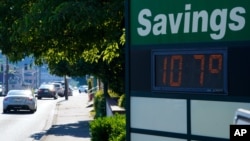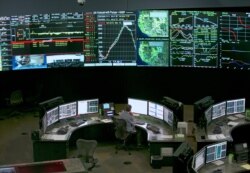As the world braces for more intense heat waves fueled by climate change this summer, urban centers across the world are unprepared to face these brutal natural disasters.
Several countries in the Middle East, including Iran, Kuwait, Oman and the United Arab Emirates, surpassed 50 degrees Celsius this summer. Also, Moscow and Helsinki, Finland, saw their hottest June temperatures on record.
A few weeks ago, a record-breaking heat wave in the usually temperate Pacific Northwest of the United States and western Canada brought temperatures of 42 degrees Celsius or higher. Oregon and Washington state reported nearly 200 heat-related deaths, and British Columbia's Coroners Service recorded over three times the number of sudden deaths than usual. Laborers in kitchens, warehouses, factories and fields suffered from heat exhaustion. Thousands of people lost power, and some public transportation services shut down due to melting operating infrastructure.
"(Heat) is different than other extremes because it's slow moving, it's invisible," said Jennifer Vanos, who studies the effects of extreme heat on human health at Arizona State University. "And when it's anomalous, when it's something people have never experienced before, then it becomes a lot more dangerous."
Many emerging global climate risks, such as heat stress, will be concentrated in urban areas, according to reports by the Intergovernmental Panel on Climate Change. Heat waves can hit hard in cities, partly because of urban infrastructure that both exacerbates and fails to handle extreme heat. With over 50% of the world's population residing in densely populated urban areas, experts expect heat-related deaths, economic consequences and infrastructural damage will become a growing concern.
Urban islands of heat
Cities can run several degrees hotter than nonurban environments. This effect, known as an urban heat island, puts city dwellers at more risk during hot weather. Asphalt in pavement and roof shingles, for example, provides a dark surface that reflects less light and absorbs more heat, explained Hashem Akbari, who studies urban heat islands at Concordia University in Montreal.
Meanwhile, closely packed buildings and streets also mean fewer trees and plants, which reduces potential shade. Plants normally absorb water through their roots and use surrounding heat to evaporate and emit the moisture as vapor from their leaves. With less greenery, that natural cooling effect is also gone.
"Citizens who are living in urban areas are going to see the cumulative effect of the heat island plus the extreme heat that will come," Akbari told VOA.
Energy demands
In these scenarios, to avoid the heat, urban populations rely on electricity to power air conditioners and fans.
"Urban infrastructure already has a higher population to serve, so the infrastructure is working at a higher capacity because of the demand (for electricity)," said Sayanti Mukherjee, a professor in the department of industrial and systems engineering at the University at Buffalo, New York.
When all these demands exceed how much electricity an energy grid can generate and provide, the system overloads and the flow of power shuts off. Extreme weather events are difficult to anticipate when they are far from the historical norms that helped city planners and engineers prepare for possible situations.
"There is a lack of adequate models that can predict what would be the demand in the future accounting for all of these extreme events," Mukherjee explained to VOA. "Climate is just taken as a constant, but the climate is changing."
Materials in infrastructure
Heat makes materials expand, and that can have consequences on urban infrastructure.
Power lines, typically made of copper or aluminum, help transmit electricity to buildings and transportation systems. A combination of heat from the weather and overloaded electricity demands can cause the metal to expand and sag. The drooping lines then risk touching trees, vehicles or people and can cause fires or deaths.
Concrete and asphalt expand too. "What we really get concerned about with heat is big variations at a quick time scale," said Matthew Adams, who studies concrete durability and sustainability at New Jersey Institute of Technology. Sudden changes in temperature can heat up a surface faster than an interior. The difference results in inconsistent expanding in concrete that creates cracks and can cause buildings, streets or bridges to deteriorate faster.
On asphalt pavement, the material has nowhere to expand sideways, so it pushes against itself, buckles upwards and cracks, Adams explained.
Then there is steel. A bridge roasting under the sun, for example, can swell where the joints of two steel parts meet and push against each other. Without room to shift, they can get stuck when trying to lift the bridge to allow boats to pass under. Similarly, rail tracks can expand to create curves and kinks that force trains to run slower or even stop to avoid accidents.
Preparing for climate change
Besides lowering greenhouse gas emissions to limit climate change, researchers are also encouraging other solutions for helping urban populations endure extreme heat.
"I think one thing cities or counties can do better is have more systematic records of heat-related deaths," Vanos said, referring to the frequent underreporting of these mortalities. That, and improving coordination across different public sectors, can help identify at-risk populations and improve emergency responses.
Planting more vegetation such as trees, grass and green roofs to shade and cool cities has the potential to turn cities into oases instead of urban heat islands, said Akbari. Updating structures with materials that are lighter in color and more reflective can also lower temperatures and save energy.
To address energy demands, Mukherjee recommends integrating renewable sources, such as wind and solar, into power generation. Introducing smart grids with computer-based operators to control the multiple components of a power system can also help utilities respond efficiently to weather events.
The world's carbon emissions have pushed the climate past a tipping point, according to experts. "The more frequent and intense heat waves are showing that we need to prepare ourselves more to address this problem in the future," said Mukherjee.











